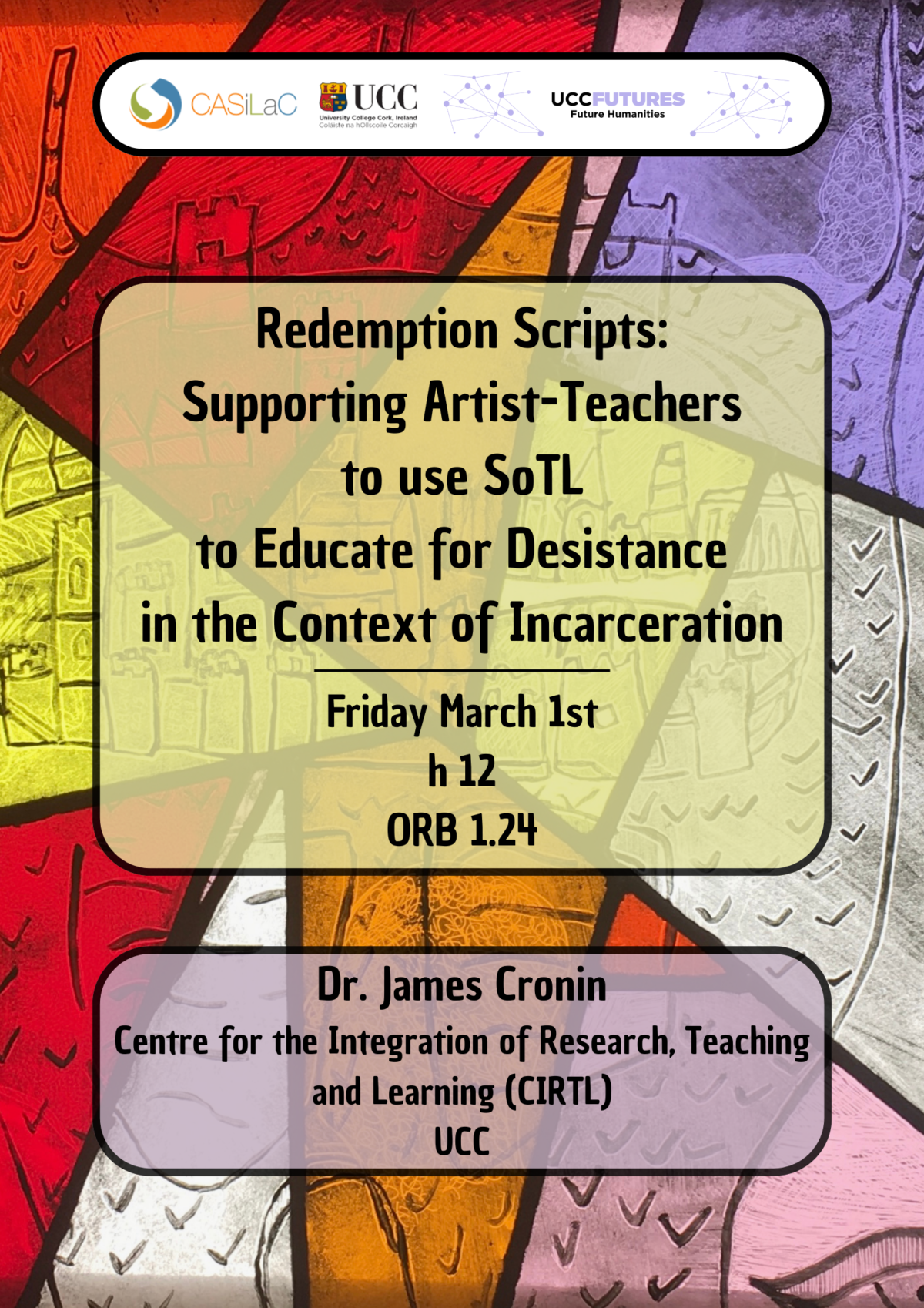Redemption scripts: supporting artist-teachers to use SoTL to educate for desistance in the context of incarceration”
Dr. James Cronin, Centre for the Integration of Research, Teaching and Learning (CIRTL), UCC
Abstract: This seminar addresses SoTL (scholarship of teaching and learning) through the visual arts to support desistance through a prison-university community partnership (2017-2024) between Cork prison and University College Cork. Learning partnerships give visibility to prison as social communities and remind us that prison and society are interconnected. Desistance is abstinence from crime by those with a previous pattern of offending. The concept emerged in academic criminology during the 1990s with the movement towards life-course criminology. The prison under consideration is a closed, medium security prison for adult males. It is site of committal for the region. This learning partnership has two objectives. The first, is to promote student agency as influenced by the university’s application of the Project Zero Classroom, Harvard Graduate School of Education. Secondly, partners promote student empowerment by facilitating them to express their stories through their visual art. The learning points focus on three strategies to promote learning partnerships. The first strategy considers what the prison requires from the partnership. The second consideration is what the university can offer the partnership. The third strategy, considers that the context of incarceration is transformative by highlighting prison as community within community. Using visual arts as a transformative pedagogy in the context of incarceration can undo some psychological and emotional damage inmates experience during confinement. Critical criminologist, Shadd Maruna (2001), argues that self-agency through promotion of “redemption scripts” is central to promoting desistance. The redemption script includes three important elements: assertion of a good “core self”; a sense of control over and hope for the future; and, generativity, the desire and effort to give something back to future generations. The visual arts used intentionally in the context of incarceration can scaffold redemption scripts because the visual arts address the affective domain and promote agency and self-authorship. It is for this reason that this seminar will consider SoTL support as the process of making redemption scripts explicit within the context of studio practices through adaption of the Project Zero Classroom in the context of incarceration.
Seminar Pedagogy: This seminar will be presented as a PowerPoint to decode the visual iconography for signs of desistance redemption scripts in paintings and art objects produced by student-inmates. For a partnership to succeed there needs to be space to listen and learn. This learning partnership aims to scaffold conversations to guide students in how structuring their thoughts and verbal/visual responses can enhance creativity. As an “outsider” I needed to learn from the experience of “insider” teachers and I needed to build circles of trust with the students. We co-designed four courses to prompt conversations about what it meant to be a person to oneself and within society through conversations on art practices.

